LOWER MAKEFIELD, PA – Pennsylvania residents who use the Scudder Falls Bridge for commutes to jobs at New Jersey state agencies and other Trenton-based offices would be the largest block of drivers to encounter the new downstream roundabout that is rescheduled to become fully operational at the I-295/Route 29 interchange (Exit 76, old exit 1) on or about Friday, Nov. 2, the Delaware River Joint Toll Bridge Commission announced today.
The single-lane roundabout is off the first exit ramp on the New Jersey side of the Scudder Falls Bridge. The roundabout, which has been in partial service since August, will serve multiple traffic movements between I-295 SB and Route 29 NB and SB. (Note: Motorists approaching the bridge from Pennsylvania are on I-295 EB; the roadway’s designation changes to I-295 SB upon crossing into New Jersey.)
Some overnight ramp closures are expected – weather permitting – 10 p.m. to 6 a.m. (next morning) Thursday, Nov. 1 – to bring the roundabout fully online. In the event of foul weather, full roundabout implementation could be delayed a day or until next week.
Travel changes for accessing the new roundabout
Pennsylvania motorists who take the first off-ramp from I-295 EB/SB after crossing the Scudder Falls Bridge into New Jersey will encounter a lane split approaching the roundabout. (A direction sign image can be viewed here.)
The right fork is for Rte. 29 NB. This lane bypasses the roundabout. Motorists taking this lane should yield to the left at the access point for the roadway leading to Route 29 NB.
The left fork at the lane split will be for accessing Route 29 SB via the new roundabout. These motorists should yield to the left at the roundabout’s entry point, as vehicles already in the roundabout always have the Right of Way. Upon entering the roundabout, the motorist should then proceed in a counter-clockwise direction to the roundabout’s exit point for Route 29 SB.
Other exit points in the roundabout will be for I-295 SB and Route 29 NB/I-295 WB.
Background
According to a 2006 evaluation study of various design options for the interchange in preparation for the Scudder Falls Bridge Replacement Project, the preponderance of traffic approaching the downstream roundabout during weekday morning peak travel periods will be from the exit ramp off I-295 SB/EB. This is the first exit ramp motorists encounter after crossing the Scudder Falls Bridge from Pennsylvania into New Jersey. Of the traffic using this ramp, nearly three-quarters will enter the roundabout to access Route 29 SB toward Trenton.
The new roundabout will replace a portion of the “spaghetti bowl” of crisscrossing ramps and lanes have confused and frustrated generations of motorists at the nearly 60-year interchange.
The interchange consists of 19 ramp mergers and 7 at-grade intersections, according to the New Jersey Department of Transportation Final Step 1 Engineering Report for I-95/New Jersey Route 29/New Jersey Route 175 Interchange — November 1995. The Scudder Falls Bridge Replacement Project’s Environmental Assessment (November 2009) also cited the interchange’s safety, operational and geometric deficiencies: “The configurations of the current bridge and adjoining interchange merges do not meet current design standards. The NJ Route 29 Interchange experienced the highest number of crashes of the locations in the project area…”
Reductions in collisions at roundabouts
The prevalence of roundabouts in the United States has grown in the past two decades. According to a 2017 article in Public Roads magazine, experts in the transportation field estimate that nearly 4,500 modern roundabouts are in operation around the country. Moreover, the National Cooperative Highway Research Program (NCHRP) Synthesis 488 Roundabout Practices determined that there is now at least one roundabout in each state and some states have hundreds of them.
A major attribute of roundabouts is safety, because they prevent T-bone collisions (also called broadside collisions) that are commonplace – and sometimes fatal – at traditional four-way intersections.
According to the U.S. Department of Transportation/Federal Highway Administration, roundabouts provide multiple benefits in comparison studies of intersection designs. These include:
- Reducing fatalities by more than 90 percent (Safety Effect of Roundabout Conversion in the United State: Empirical Bayes Observational Before-After Study, Transportation Research Record 1751, Transportation Research Board, National Academy of Sciences – 2001)
- Reducing injuries in collisions by 76 percent (National Cooperative Highway Research Program Report 572: Roundabouts in the United States – 2007)
- Reducing collisions by 35 percent (National Cooperative Highway Research Program Report 572: Roundabouts in the United States – 2007)
